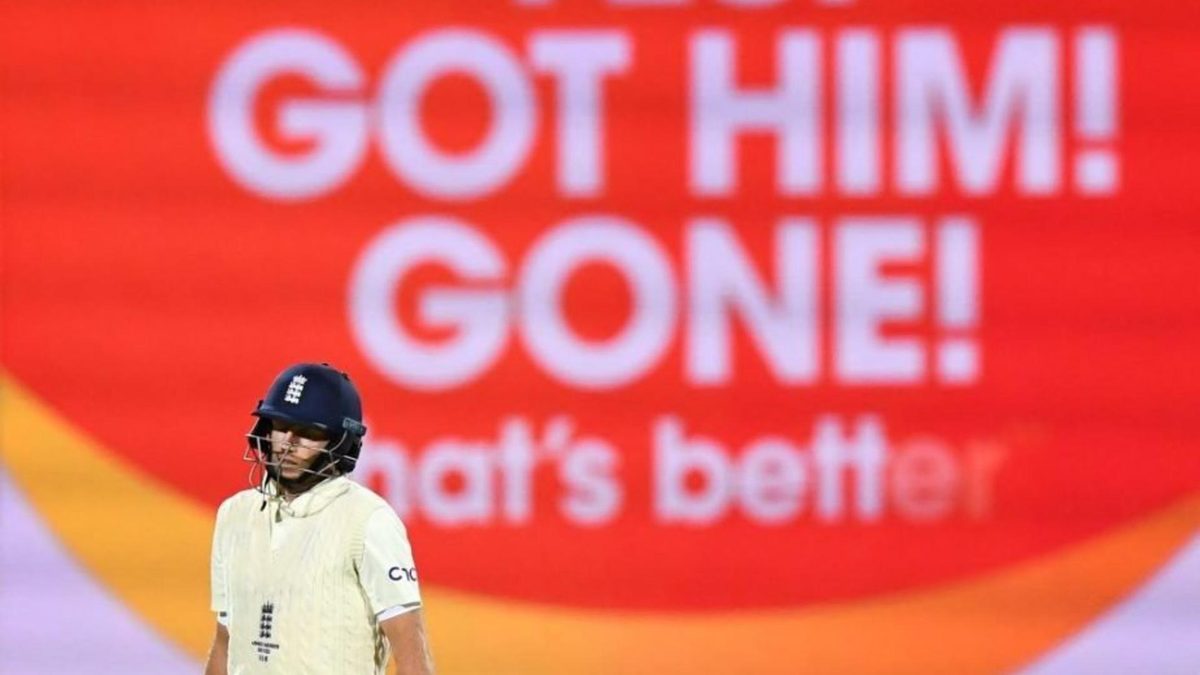
Taha Hashim reflects on England’s central problem after another thumping Ashes defeat.
After nine days of play, we know where this one’s going. England are 2-0 down after two Tests and somehow that scoreline still doesn’t cut it. From ball one – really, ball one – England have suffered and suffered some more: batting collapses, dropped catches, selection mishaps and nut-crackers (we all felt the pain too, Joe).
There was real fight on the final day at Adelaide, but the end result was a 275-run defeat. The tourists have now lost 11 of their last 12 Tests in Australia and only delusion would suggest that there’s a way back from here. The series is still mathematically alive, but it feels like we’re already into the post-mortem.
Much has been said and written about England’s choices and tactics with the ball across the last two Tests. Sure, maybe Stuart Broad should have played on a green one at the Gabba and Mark Wood on a flat one at the Adelaide Oval. They could have bowled fuller at times and, having lost the services of Jofra Archer and Olly Stone in advance, the old joke was repeated at Adelaide: that of the fast-medium right-armers and nothing else. The dropped catches have not been pretty.
But the constant focus on all of these subjects is ultimately down to the other side of the story, England’s batting. The dearth of runs invites greater attention upon the minutiae of the other half; because the returns with the bat are consistently poor, the bowling has to work on all fronts, be in complete sync, achieve near perfection for any chance of victory. The sense of chaos that engulfed England when Jack Leach was carted in Brisbane wasn’t just down to what was happening in the here and now; it was linked to the fact that the batters before him had put up just 147 on the board. He was under the attack from the scoreboard before he’d even bowled a ball.
Chris Silverwood has preached the desire over the last two years to score big first-innings runs (I mean, why wouldn’t you want to do that?). Now with even medium-sized totals running out of stock, their base has been compromised. Does that perhaps disrupt the confidence and concentration that is required to field well? Does that perhaps lead to bowlers playing safe with their lengths, knowing full well that they don’t or won’t have too many runs to play with?
Aside from Joe Root and Dawid Malan, no batter has threatened their career average, let alone domination; Chris Woakes, the No.8, is England’s third-highest run-scorer in the series. With the way things are, this should probably be the point in the tour where the decision-makers look to their options on the bench and make a call. But even here, the equation isn’t so simple. Zak Crawley, Dan Lawrence and Jonny Bairstow, all of whom average between 27 and 34 with the bat in Test cricket, have had opportunities this year and subsequently been discarded. Australia, if they’d like, can let someone else carry the drinks instead of Usman Khawaja, a batter who averages 40.66 after 44 Tests and more than 50 at home.
There is no quick fix here, and there won’t be after this series; England probably do have something close to their best set of batters in Australia right now. That there was little uproar at any potentially glaring omissions when the squad was announced suggests so. Ollie Pope, for all his troubles, can point to his healthy first-class numbers to display why he’s regarded as one of the best young batters in the country. England have flirted with a whole raft of openers in the last decade to follow the lead of Alastair Cook and Andrew Strauss, and Rory Burns is the only one they’ve taken home to meet the parents.
This invites bigger questions then, those obvious ones of the county system but those of the England one too, for players like Pope, Zak Crawley and Dom Sibley have come into the side and shown genuine promise before falling into a rut. An environment that should be improving these young batters is sending them the other way.
Long-term solutions are required but there’s still much to be done in the short term, against a top-drawer attack. Even without Pat Cummins and Josh Hazlewood, Australia’s bowlers didn’t let up at Adelaide: Mitchell Starc took on the leadership mantle, Michael Neser did little wrong on debut and you don’t need the numbers in front of you to understand there’s something special about Jhye Richardson. Cameron Green is some option to call your fourth seamer, and Nathan Lyon, well, he’s got more than 400 Test wickets. England face a tough ask ahead of them to avoid serious embarrassment.








